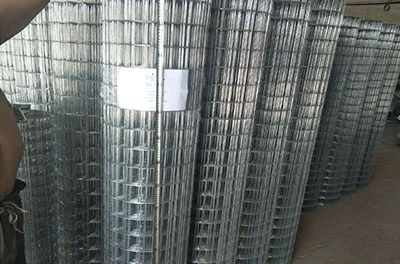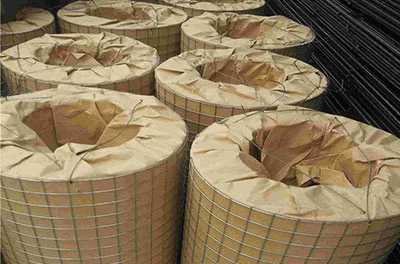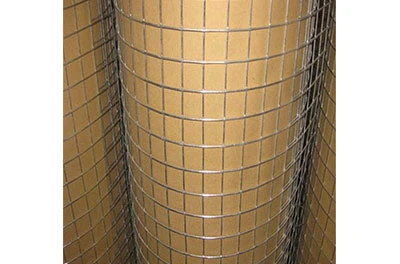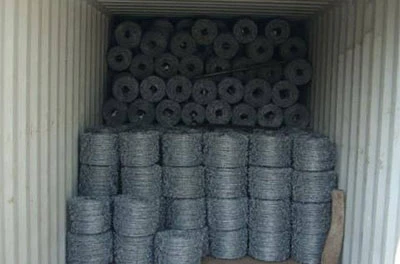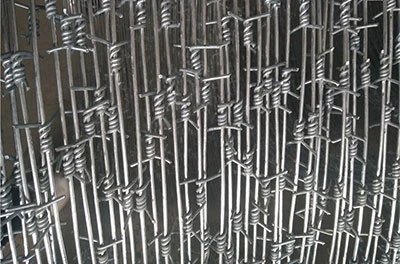Nov . 17, 2025 16:36 Back to list
Fire Grating Solutions: Global Safety, Durable Designs & Smart Technology
Understanding Fire Grating: A Vital Element for Safety and Industry
Fire grating might not be something you think about every day (or even every year), but if you do work in construction, manufacturing, or safety management, it’s quite the game-changer. In essence, fire grating refers to specially designed metal meshes or bars that serve as protective barriers, allowing airflow or drainage while resisting the spread of flames and heat. Globally, these components are incredibly important—they help prevent the rapid progression of fires in buildings, industrial sites, and even emergency relief settings. Knowing what fire grating is and how it works can save lives, reduce damage, and support compliance with international safety standards.
The Global Importance of Fire Grating
The numbers tell a sobering story. The United Nations estimates that fires cause over 300,000 deaths annually worldwide, with billions lost in property damage. In industrial zones where flammable materials are stored or processed, a minor spark can escalate catastrophically. Around 70% of fire-related deaths happen in buildings without appropriate fire control measures (ISO fire safety reports).
That’s where fire grating comes into the picture—it’s not just a metal sheet; it’s a frontline defense, baked into the infrastructure that can slow down or prevent the spread of fire. For global industries aiming at safer facilities and compliance with regulations like ISO 13501-2 (fire resistance testing), investing in quality fire grating means mitigating risk in a very practical way.
What Exactly Is Fire Grating?
Simply put, fire grating consists of steel or other metal bars arranged in a grid or mesh pattern that lets air, light, or water pass through while forming a resilient barrier to fire. Think of them like the grill on a barbecue but purpose-built to restrict flame passage and withstand extreme temperatures.
Industrial plants, warehouses, server rooms, and even humanitarian camps use fire grating to create firebreaks or protect ventilation points. It’s fundamentally about balancing permeability with protection—making sure you don’t suffocate a space, but also don’t let fire rush unchecked.
Core Features of Fire Grating That Matter Most
Durability Under Extreme Conditions
Fire grating must endure temperatures over 1000°C without warping or melting. Most products use stainless steel alloys rich in chromium to boost heat resistance and prevent corrosion. Many engineers I talked to swear by galvanized steel—not just because it’s durable but also because it holds up well outdoors, where weather and chemical exposure can be brutal.
Airflow and Smoke Ventilation
Interestingly, fire grating isn’t about sealing things shut but about controlling how air and smoke pass through. A good grating facilitates emergency evacuation conditions by venting smoke, reducing toxic build-up, and allowing fire crews visibility and ventilation access. Oddly enough, this balancing act between protection and permeability is one of the trickiest design challenges.
Cost Efficiency and Scalability
For large installations or multi-story buildings, scalability is key. Fire grating systems are modular, allowing site managers to cover vast areas without huge cost spikes. While upfront investment might be substantial, many facility managers note that long-term savings in maintenance and replacement costs easily justify it.
Customization For Specific Environments
From heavy industrial furnaces in Europe to remote humanitarian shelters in Asia, no two fire grating needs are identical. Designing custom grids with particular thicknesses, spacing, or coatings is typical. For instance, in coastal zones, salt corrosion means anti-rust coatings are mandatory. Having this flexibility helps facilities adapt quickly to diverse fire codes and environmental challenges.
Fire Grating in Action Around the World
The applications for fire grating range widely, but a few key examples stand out:
- Post-disaster relief camps: In wildfire-prone areas of California or Australia, rapid deployment of fire-grated modular shelters allows emergency teams to protect lives and equipment effectively.
- Industrial plants: Petrochemical facilities in the Middle East utilize fire grating to isolate high-risk zones and ensure safe airflow without fire breach.
- Transportation hubs: Airports and train stations in Europe embed fire gratings in ventilation shafts to maintain air quality while satisfying fire codes that have tightened post-9/11.
- High-rise residential buildings: Fire proofing stairwell accessways through reinforced fire grating remains a standard in cities like New York and Tokyo.
Mini takeaway: Fire grating isn’t just metal—it’s tailored safety hardware engineering that saves structures and lives worldwide.
Why Fire Grating Brings Long-Term Value
Choosing the right fire grating system goes well beyond ticking a compliance box. It’s a long-term investment in peace of mind. Here's why:
- Safety assurance: It literally gives occupants a fighting chance, curbing fire spread and maintaining vital smoke ventilation.
- Sustainability: Most fire gratings are fully recyclable metal, meaning the environmental footprint is lower than alternatives.
- Economic sense: Reduction in insurance premiums, fewer operational shutdowns, and longer asset lifespan.
- Trust and reputation: Facilities that commit to high safety standards attract better talent and partnerships, building goodwill.
What’s Next? Emerging Trends in Fire Grating Technology
One exciting frontier is integrating fire gratings with smart monitoring systems. Imagine a grating that senses temperature spikes along its surface and alerts maintenance teams proactively—that feels like real progress. Materials research is also moving toward composites combining metal with ceramic coatings to push heat resistance even higher while reducing weight.
Eco-conscious manufacturing and automation are driving down costs. There’s also talk about modular fire grating panels that can be quickly swapped out after exposure, ideal for industrial zones with frequently changing configurations.
The Challenges and How the Industry Is Tackling Them
Of course, fire grating isn’t without hurdles. Common issues include ensuring absolute adherence to local fire codes, particularly in countries with varying standards or enforcement. Also, installation sometimes requires skilled technicians—the grids cannot be slapped on haphazardly.
Solutions? Training programs by manufacturers, better digital specs for installers, and stronger global standards from ISO and other regulatory bodies. Plus, the rise of fire grating vendors delivering modular, plug-and-play systems is lowering barriers.
Technical Specifications of a Typical Fire Grating Product
| Parameter | Value | Comments |
|---|---|---|
| Material | Stainless Steel (AISI 316) | High corrosion and heat resistance |
| Bar Width | 10 mm | Ensures structural integrity under stress |
| Spacing Between Bars | 50 mm | Optimized for airflow & flame resistance |
| Max Operating Temp | 1100 °C | Consistent with ISO 834 fire test |
| Surface Finish | Galvanized & Powder Coated | Improves longevity in harsh environments |
| Panel Size | 2 m x 1 m | Modular for easy installation |
Comparing Leading Fire Grating Vendors
| Vendor | Materials Used | Customization Options | Price Range (per panel) | Lead Time |
|---|---|---|---|---|
| Chengsen Mesh Co. | Stainless Steel AISI 316, Galvanized Steel | Bar Width, Coatings, Panel Sizes | $150 - $250 | 2-4 Weeks |
| SafeGrate Solutions | Carbon Steel, Aluminum | Limited (Standard Panels) | $120 - $200 | 3-5 Weeks |
| FireSafe Tech | Stainless Steel, Ceramic Coated | Advanced Coatings, Custom Sizes | $200 - $320 | 4-6 Weeks |
FAQ: Common Questions About Fire Grating
Q1: How does fire grating improve building safety compared to normal grills?
A1: Unlike standard grills, fire grating is engineered with materials and spacing that resist fire penetration and maintain structural integrity at very high temperatures, often exceeding 1000°C. This reduces fire spread, helps with smoke ventilation, and complies with fire codes that standard grills can't meet.
Q2: Can fire grating be installed on existing structures?
A2: Yes, fire grating panels are often modular and can be retrofitted onto existing frames, window openings, or ventilation shafts. Proper installation by certified professionals ensures the grating meets the required fire-resistance performance standards.
Q3: Are fire gratings weather-resistant and suitable for outdoor use?
A3: High-quality fire gratings use corrosion-resistant materials like stainless steel and coatings like galvanization or powder coating, making them effective even in outdoor, harsh environments.
Q4: Do fire gratings require regular maintenance?
A4: Routine inspections are recommended to check for physical damage or corrosion, especially in coastal or industrial areas. However, quality fire gratings generally have a long service life due to durable materials.
Q5: How can organizations source fire grating internationally?
A5: Many manufacturers, such as Chengsen Mesh Co., offer global shipping and customization. It’s best to work directly with vendors to ensure compliance with local codes and receive tailored solutions.
Final Thoughts: Why Fire Grating Deserves Your Attention
Fire grating quietly serves as the unsung hero in many safety systems around the globe. I’ve noticed that when organizations seriously consider fire grating early in design or retrofit planning, they save hassle, money, and frankly, lives. Putting thought into material choice, customization, and vendor selection isn’t just good sense—it’s essential for future-proofing.
For anyone serious about fire safety infrastructure, visiting https://www.chengsenmesh.com is a natural next step. There you’ll find not just products, but partnerships with experts who get the nuances of fire safety and technological innovation.
Until next time, stay safe—but also stay curious about the things that keep us safe!
References
- United Nations Fire Safety Statistics
- ISO 13501-2 Fire Resistance Testing
- Wikipedia: Fire Safety
Latest News
-
Electro and Hot-Dip Galvanized Welded Wire Mesh Roll 1/8–4”
NewsNov.17,2025
-
Wire Mesh Conveyor Belts - Stainless Steel, Heat-Resistant
NewsNov.17,2025
-
Durable Circular Grating Solutions for Industrial Applications
NewsNov.17,2025
-
2m x 1m x 0.5m Galfan Gabion Basket Retaining Wall Design
NewsNov.17,2025
-
Ferrotech Grating: Durable Solutions for Modern Industry
NewsNov.17,2025
-
Trusted Aluminum Grating Manufacturers | Durable & Light
NewsNov.17,2025
Our company owns has excellent CAD steel grating drawing designers, who can provide customers with perfect steel grating layout design and better meet customers' special requirements for products. We have been adhering to it the business tenet of "quality first, customer first", with high-quality products, reasonable prices, and the fastest delivery time, we wholeheartedly provide customers with a full range of services! Welcome new and old customers to cooperate sincerely and create brilliance together!
Contact Us
WELCOME TO OUR COMPANY!
Thank you for your interest in our services! If you have any questions or wousld like to book a service, please don’t hesitate to contact us. Our team is dedicated to providing you with the highest level of service and support, and we are committed to working with you to make your event a success.

Service Email

Service Phone
Product Center
Contact Us
- Phone: +86 +86 15733154345
- E-mail: sales@chengsenchina.com
- Address: B1213 GLOBAL CENTER, NO.226 ZHONGHUA NORTH STREET, SHIJIAHUANG, CHINA



